Last semester ended with the prom. I remember wearing a jet-black outfit with hair gelled to the side. I put my perfume on before leaving for my car. My mother complimented my appearance, but I still felt something was missing. My hand brushed against the side of my pocket; something was missing. It was the pocket watch I’d inherited from my grandfather!
Having had a lovely history with antiques my entire life, pocket watches are not a subject foreign to me. However, keeping a pocket watch and being informed about an antique piece are two different matters.
So, to make things easier, I’ve developed this guide to address all your queries regarding an antique pocket watch. This includes the identification of antique pocket watches, their brands, and a value guide to assessing the worth of your piece.
Table of Contents
Pocket Watch: A Brief History:
Today, time is of the essence, and it is the most expensive thing in the world. However, this was not always the case. Time was insignificant until the Ancient Egyptians learnt to divide day and night into 24 hours.
The pocket watch has been a symbol of wealth since its development in the 16th century. It has slowly infused itself into modern culture. It has become an essential part of male fashion, representing class and affluence.
The first pocket watch was developed in 1510 by a locksmith based in Nuremberg, Peter Henlein. Henlein took advantage of the advancements in the mainspring and created a watch design that did not require falling weights to power them. The first models developed were boxy and did not fit in the pocket. Instead, they were worn as a pendant on a chain around the neck.
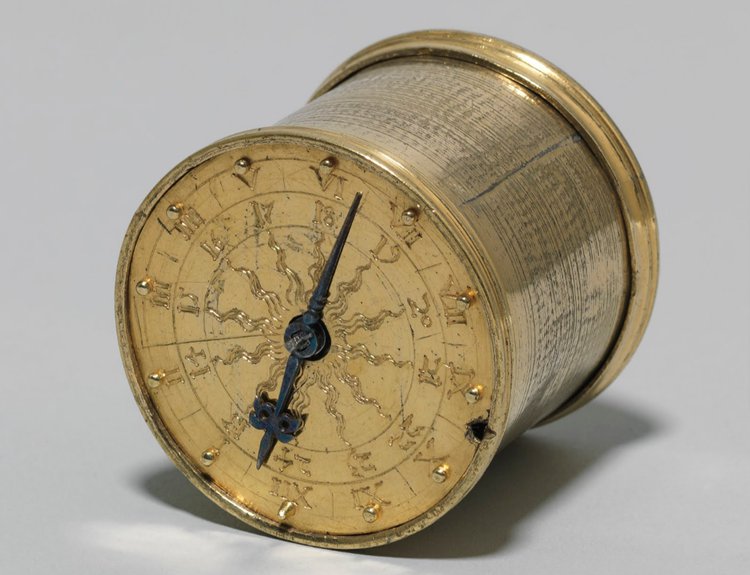
By the early 1520s, Peter Henlein’s designs gained much popularity and spread to the rest of Europe, particularly England and Scotland. With the improvements in mechanical engineering, screws, and mainspring devices, the structure of the pocket watch was made smaller and lighter.
In 1675, significant improvements in the design were bought by Charles II of England, and the first pocket watch, small enough to fit into a pocket, was built. Soon after, they were considered a symbol of affluence in North America.

The popularity of these watches rapidly grew, and with the introduction of the lever escapement, the problems of losing hours were fixed. By the 18th century, pocket watches were intricately designed with jewels embedded in its body. This made the watch an extremely luxurious item that the elite could only afford.
The Industrial Revolution in 1857 introduced the first pocket watches to the general public. Built using cheaper materials, they flooded the European and American markets and were soon worn by everyone.
The pocket watch remained popular for centuries, with only a decline in its popularity in the 1900s with the introduction of the wristwatch. However, the pocket watch came back in the 1950s and 70s due to the introduction of three-piece suits and tuxedos.
Today, the world has shifted to technology and smartphones, yet, pocket watches haven’t lost their prestige and legacy.
Antique Pocket Watch Identification:
Antique pocket watches, crafted into finer details by skilful watchmakers, were examples of unique design and engineering. Serving as a timepiece and a luxurious item, it is still highly sought after today and symbolizes wealth. However, the value of your piece dramatically depends on your ability to accurately identify your watch and its material.
Antique pocket watch identification involves recognizing your watch type and the manufacturer. Here’s a YouTube video explaining how to identify an antique pocket watch.
These are the things you should keep in mind while identifying an antique pocket watch:
Identify the Manufacturer:
While identifying an antique pocket watch, you should start with the manufacturer. The manufacturer name is usually present on the watch dial, but in some cases, it may be absent. In such conditions, you should look for the name on the pocket watch’s backplate and determine the city/country. Afterwards, search for manufacturers based in this location.
It is vital to remember that many pocket watches that are difficult to identify are valuable collectables. So, try not to get tired.
Identify the Serial Number:
The serial number is also used for the purpose of identification. American pocket watches have different serial numbers on the case and the watch movements because a different company manufactured each part of the watch. Other watches have a single serial number on the back of the case.
You should carefully remove the watch casing and note the serial number. Afterwards, you can quickly identify your timepiece using a source such as Pocket Watch Database.
Identify the Age:
Establishing the age of your pocket watch can be a daunting task. Many watches have distinctive features which reflect the era of manufacturing. The manual windings and arrow regulators provide clues to determine the age.
Identify the Type of Antique Watch:
The watch dial, face, and case are used to identify the type of antique pocket watch. Common types include:
Hunter Case Pocket Watch:
This watch consists of a metal cover attached to a spring hinge that can be quickly closed to protect the crystal on the dial. The winding mechanisms, the stem and crown are located at a 3’0 clock position.
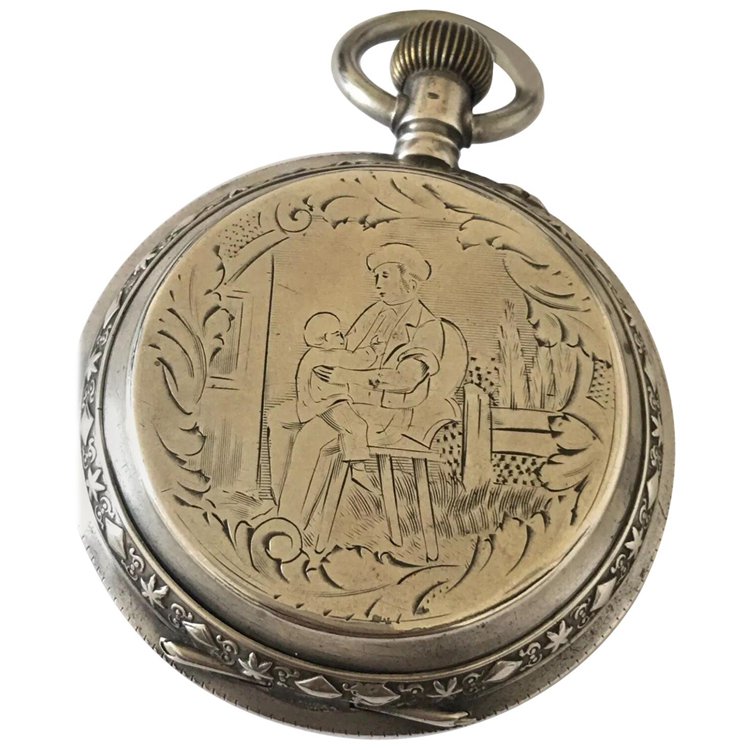
Demi-Hunter Case Pocket Watch:
These are European-style pocket watches with a little window on the cover, which helps to tell the time without opening the watch cover.
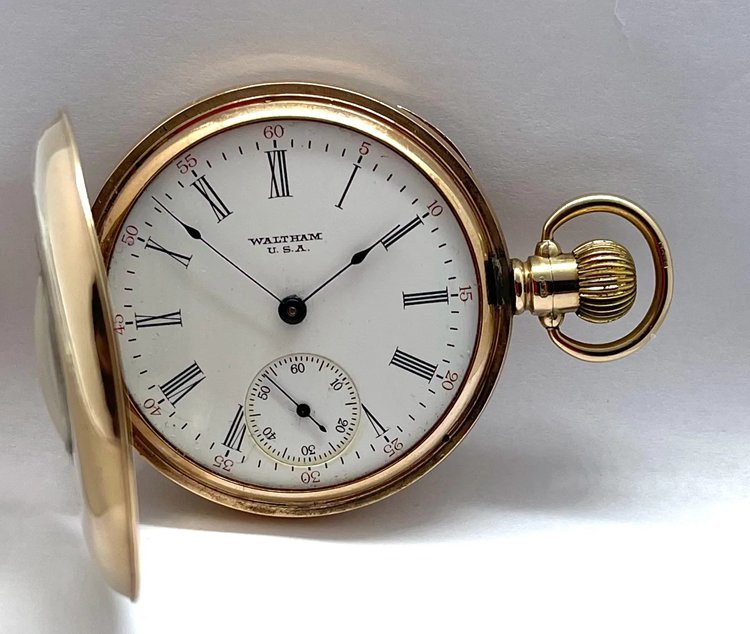
Open Face Pocket Watch:
As the name implies, these watches do not have a cover of protection for the crystal and glass on the dial. The crown, winding, and stem will be located at the 12 positions on the watch.
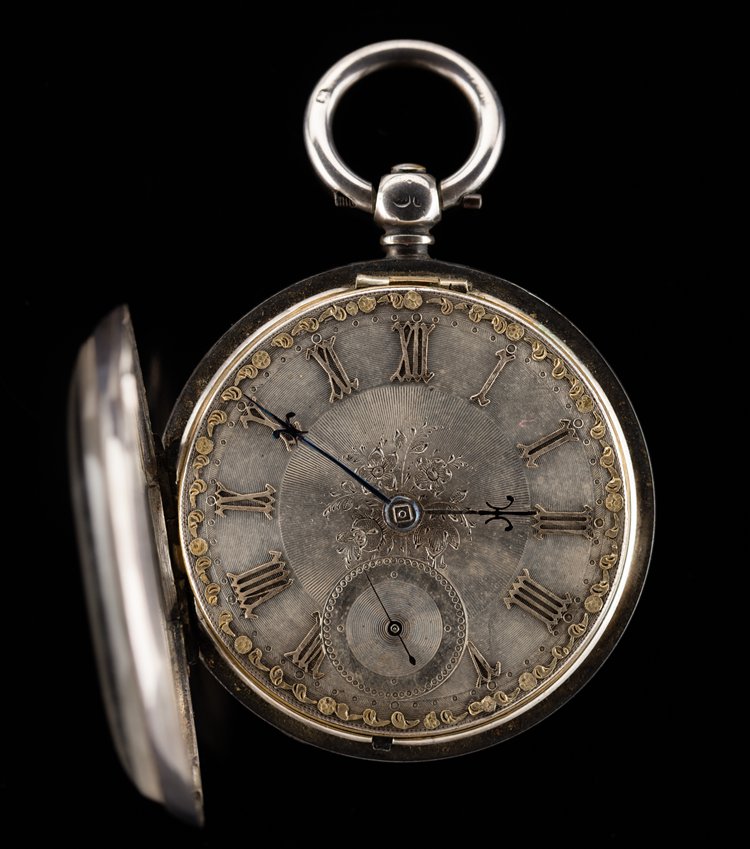
Pair Cased Pocket Watch:
This unique design consists of an open-face pocket watch placed inside a Hunter case. The inner case is removable and then placed outside for protection.
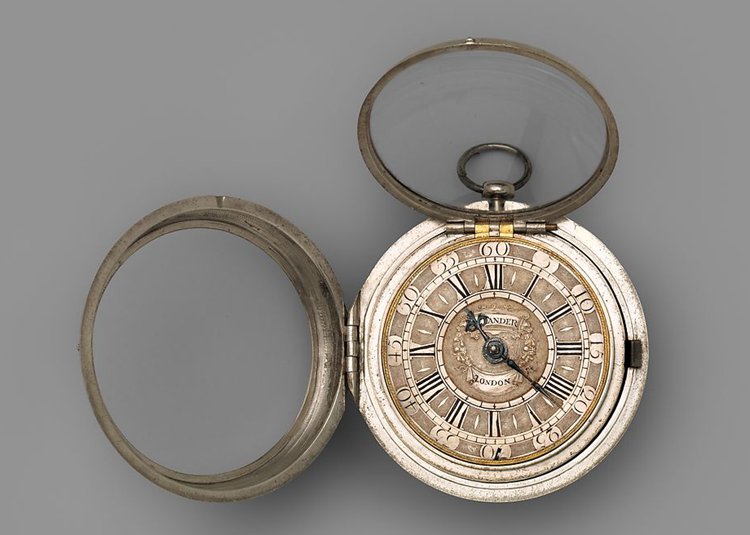
Watch, ca. 1710–20
British, London,
Outer case, inner case, and champlevé dial: silver, enamel; steel hands; diamonds; Diameter of outer case: 2 in. (5.1 cm); Diameter of inner case: 1 3/4 in. (4.4 cm); Diameter of back plate: 1 3/8 in. (3.5 cm); Depth of whole object: 1 1/16 in. (2.7 cm)
The Metropolitan Museum of Art, New York, Gift of J. Pierpont Morgan, 1917 (17.190.1503a, b)
(Image Source: Metmuseum)
Military Pocket Watch:
Pocket watches in simple designs were standard issues in the military in the 1900s.
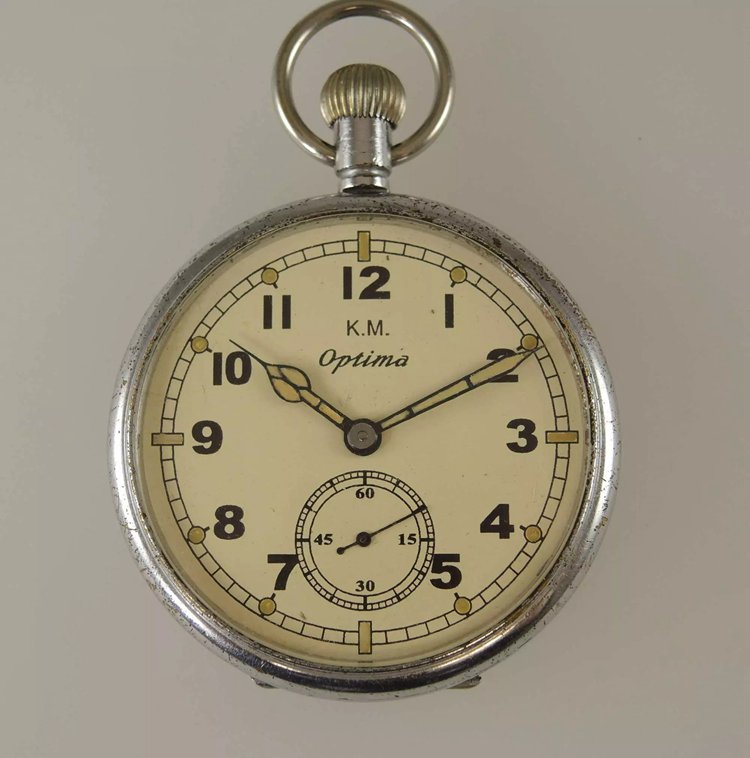
Stainless Steel Pocket Watch:
These watches have their case made from stainless steel.
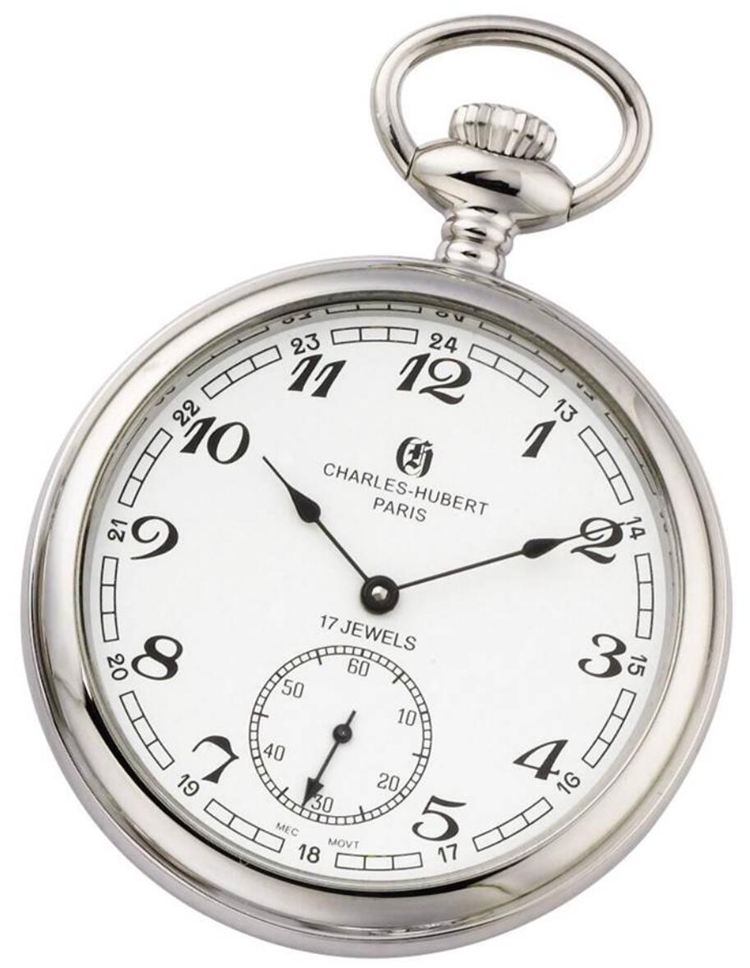
Railroad Pocket Watch:
Judging by the name, railroad pocket watches were specially designed for railroad workers. These watches had a simple, intricate design in an open face.
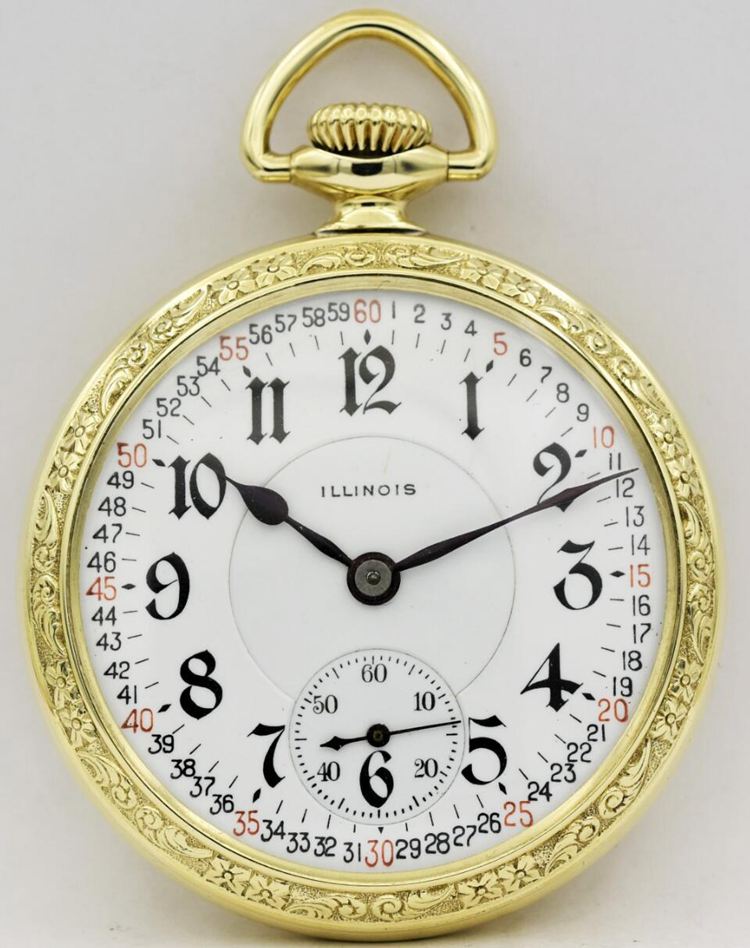
Wristwatch Conversion:
This was formerly a wristwatch, which is now converted into a pocket watch for the user.
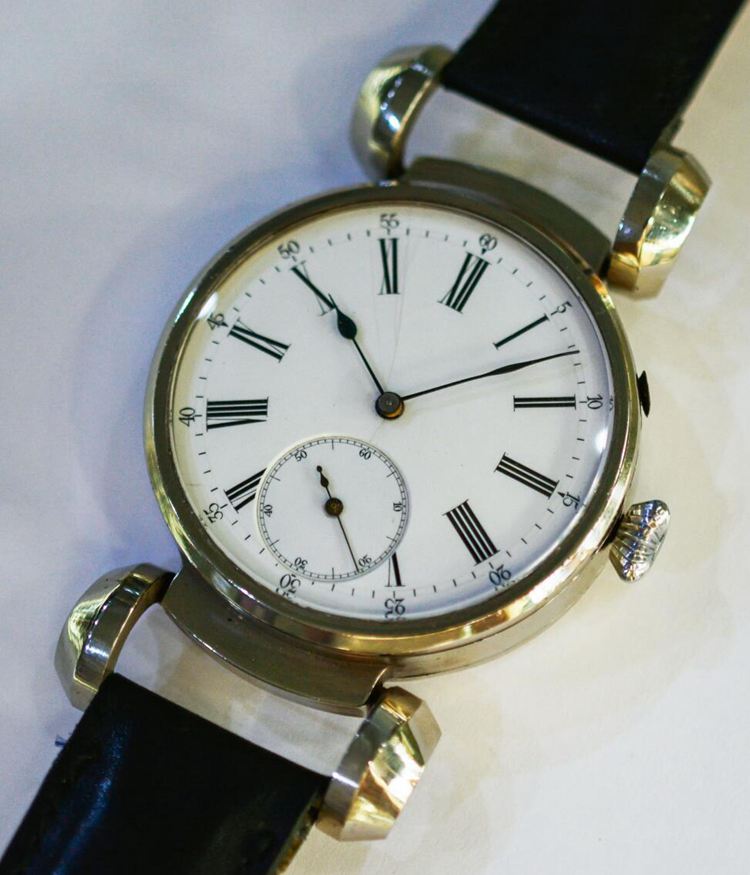
Identify Watch Movement:
The movement is the machinery of the pocket watch. The watch case is not an excellent source to determine the movement’s legitimacy. This is because many companies manufactured and sold movements to jewelers and retail stores, where users could get a casing of their choice. So, it is common to see a piece of expensive machinery fitted in a cheap case.
There are several types of movements which can hint at the era of production of your pocket watch:
Key Wind, Key Set:
These watches were in fashion from the 1600s to the mid-1800s and required a unique key for winding and setting.
Stem Wind, Stem Set:
As the name suggests, this type uses a stem to wind and set the watch, eliminating the use of a key. They were in fashion in the 1850s.
Stem Wind, Lever Set:
This machinery was made part of railroad pocket watches, allowing easy access to the particular setting lever.
Stem Wind, Pin Set:
This is the modern method where a stem is used to wind, and a pin is used to set the time before releasing it.
Jeweled:
Luxurious watches have this machinery where expensive metals are used to reduce friction between parts.
Identifying by Comparison:
You can identify some pocket watches by comparing models from different companies until the correct one has been found. It would be best to start with the clock, followed by the shapes and styles. You can also get a hint from the winding or the regulator.
Similarly, the arrangement of a piece compared to the jewel count on the dial cover or watch case and the adjusters can help in the identification process. However, the numbering on the case should be ignored owing to the changing cases.
Antique Pocket Watch Brands:
Antique pocket watches should be examples of magnificent design and engineering. Many collectors consider sticking to one company, type, or material. In contrast, others invest in pocket watches having good physical and aesthetic value.
If you have a taste in antique watch collecting, there are some brands you should consider investing in. However, most of these companies are highly sought after, owing to their long history of excellent design.
I will be mentioning some of the most preferred brands when it comes to antique pocket watches and a brief insight into their history as well.
Waltham Watch Company:
Also known as the American Watch Company, Waltham was the first company mass-producing pocket watches in the 19th century. It was also known for producing other precision instruments such as compasses, speedometers, and clocks. Today, they can sell for anywhere between $150 to $500.
The company changed hands multiple times because of bankruptcy and closed operations in 1957. However, before it ran out of business in 1954, it founded a subsidiary, Waltham International SA, in Switzerland. The company owns the right to use the Waltham name in Europe.
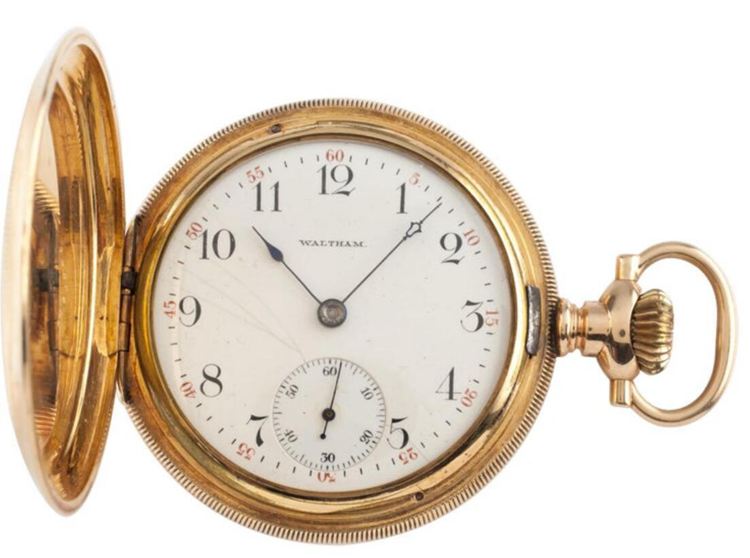
Elgin Watch Company:
Founded in 1864 under the name of National Watch Company, the Elgin brand is no surprise when it comes to pocket watch kingpins. The first watch was released in 1867, followed by 60 million pieces in the next 100 years.
Elgin watches were hand-crafted until the company realized the potential of this industry and started using factory-assembled parts. This led to the company’s name being linked to mid-quality watches, producing many timepieces you can easily buy today.
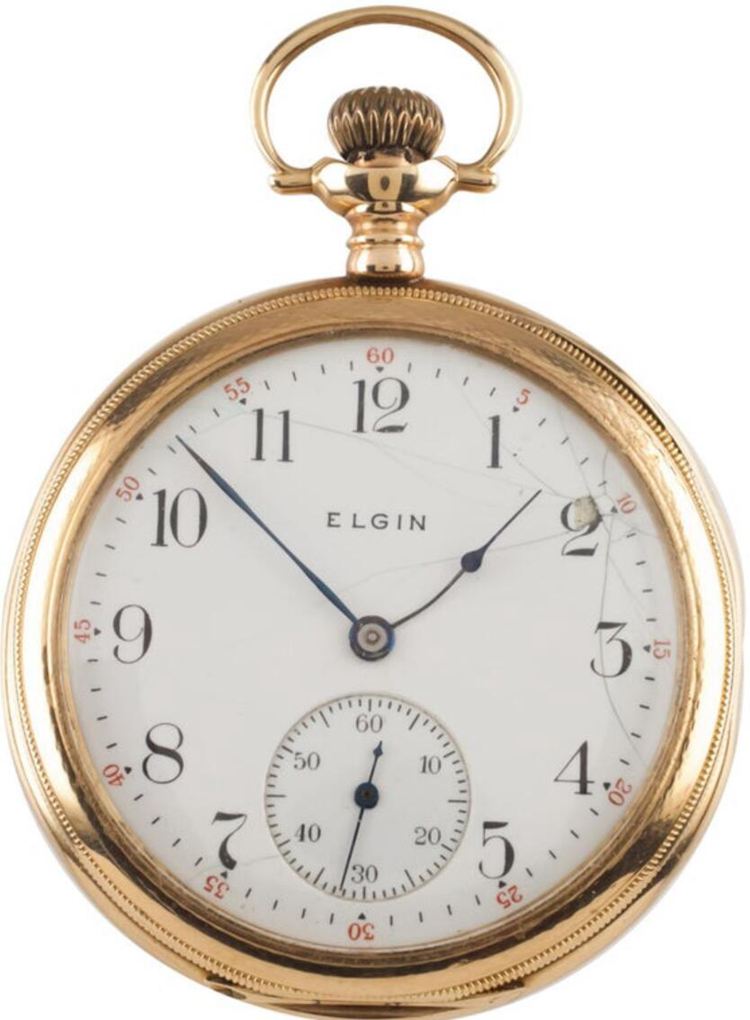
Illinois Watch Company:
Illinois Watch Company was founded in 1867 with the sole vision of producing some of the most top-notch watches in the world. The dream remained alive for half the next century until the Hamilton Watch Company bought it in 1928.
Today, you can only find antique pieces from the company at specialized shop salons and antique stores.
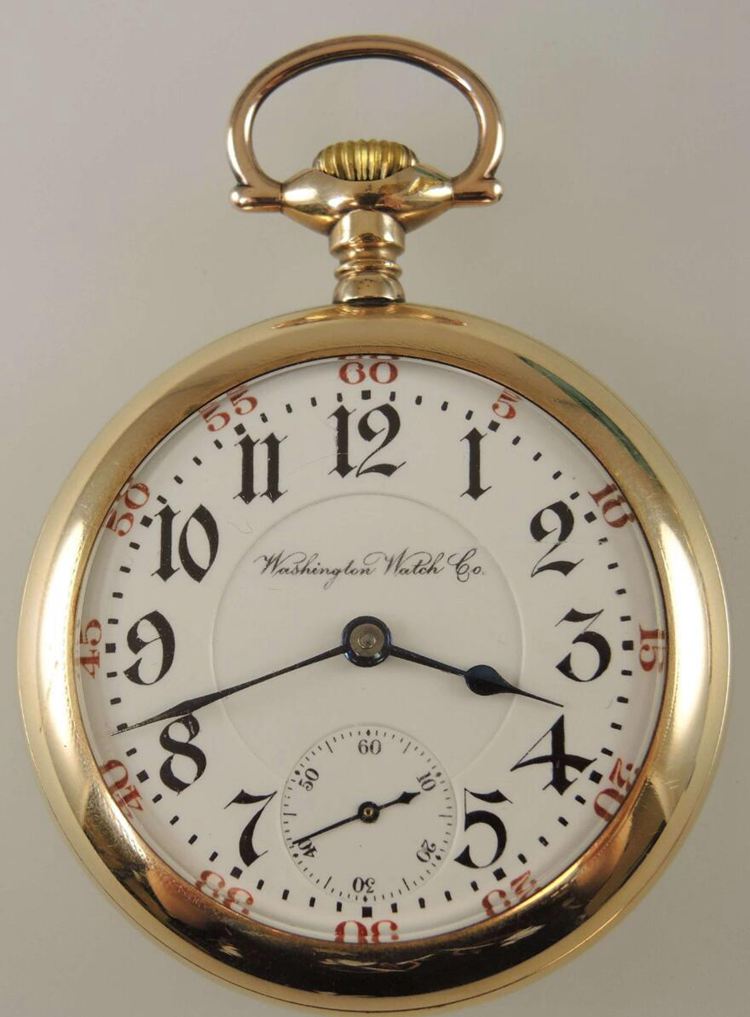
Hamilton Watch Company:
Hamilton watches, founded in 1892 in the United States, is known for its design, American innovation, and Swiss precision. The company took the task of producing railroad pocket watches and delivered exceptionally. Soon, Hamilton was the name specializing in the matter.
The company soon shifted to the general public and released several pieces which caught the industry by the storm. Its phenomenal reputation on the railroad tracks and in public helped it to become the timepiece supplier for the Armed Forces during World War I. Hamilton watches have featured in over 500 Hollywood movies to this day.
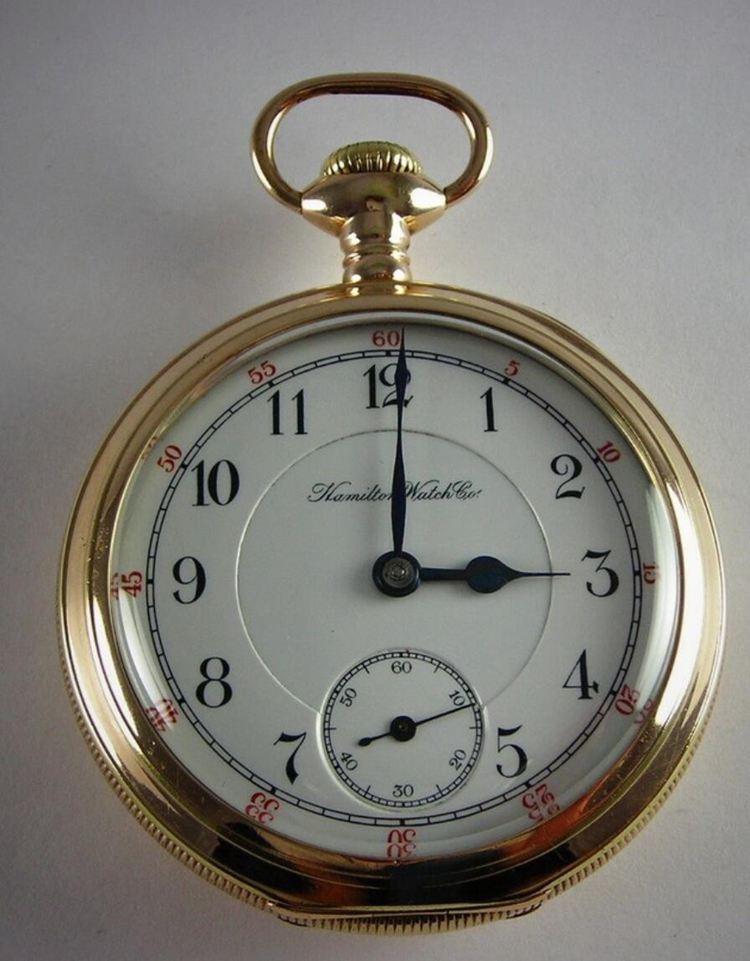
Ebel Watch Company:
A Swiss brand, Ebel has a name in the pocket watch industry. The company is known for luxurious pieces that date back to their origin in 1911.
The brand has sponsored the work of several artists since its inception, with famous names such as Jean Arcelain, the Swiss painter, and Le Corbusier, the renowned architect.
Today, antique pocket watches produced by the company fetch some of the highest prices.
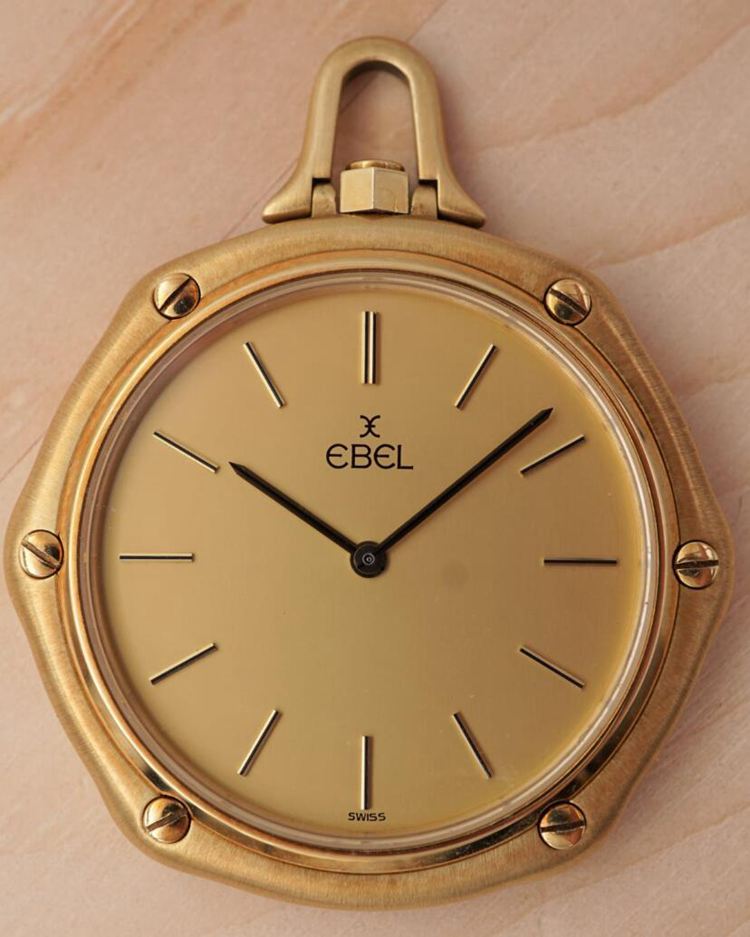
Ball Watch Company:
Another Swiss addition to the list, the company has a name in the luxurious pocket watch industry. It was founded in 1891 and soon penetrated the railroad market, developing pieces for it.
The brand produced eight distinct collections, which are pretty valuable today.
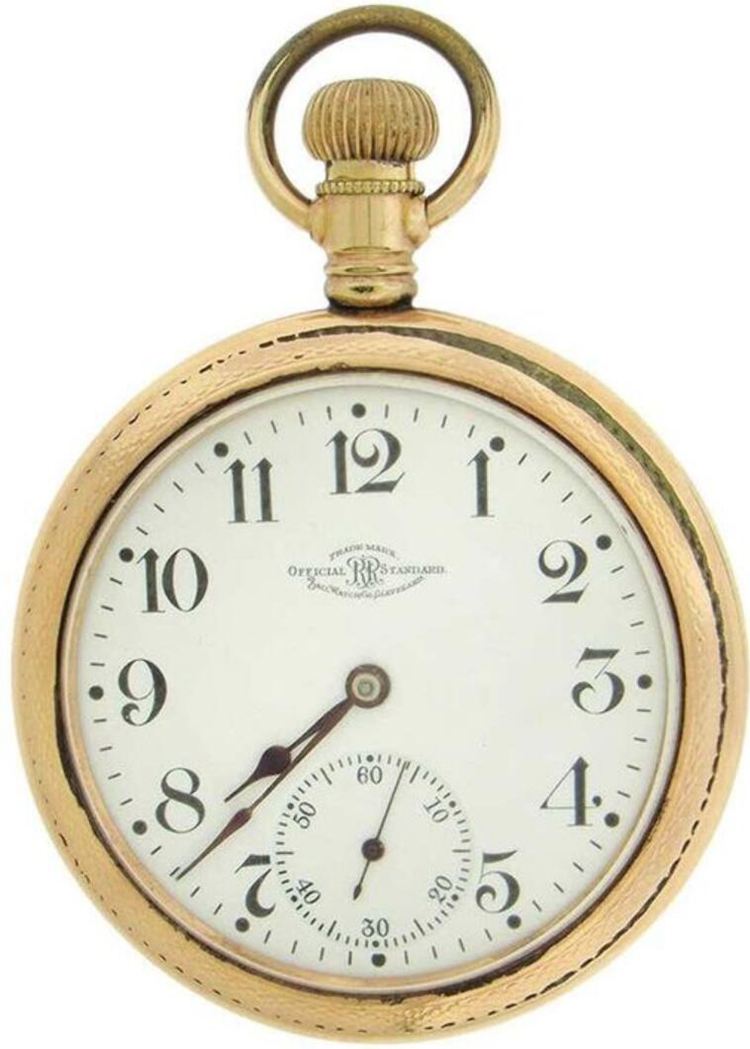
Longines:
Longines is another Swiss giant founded in the year 1832. The company was renowned for its innovative design, which separated it from its competitors. One of such designs was the anchor escapement, which earned it an award at the 1867 Universal Exhibition in Paris.
The brand soon developed its first chronograph, followed by many stopwatches that made their way into the sporting world. Heading into the 20th century, Longines was known for its precision.
Today, Longines is the oldest registered trademark still used in unchanged form.
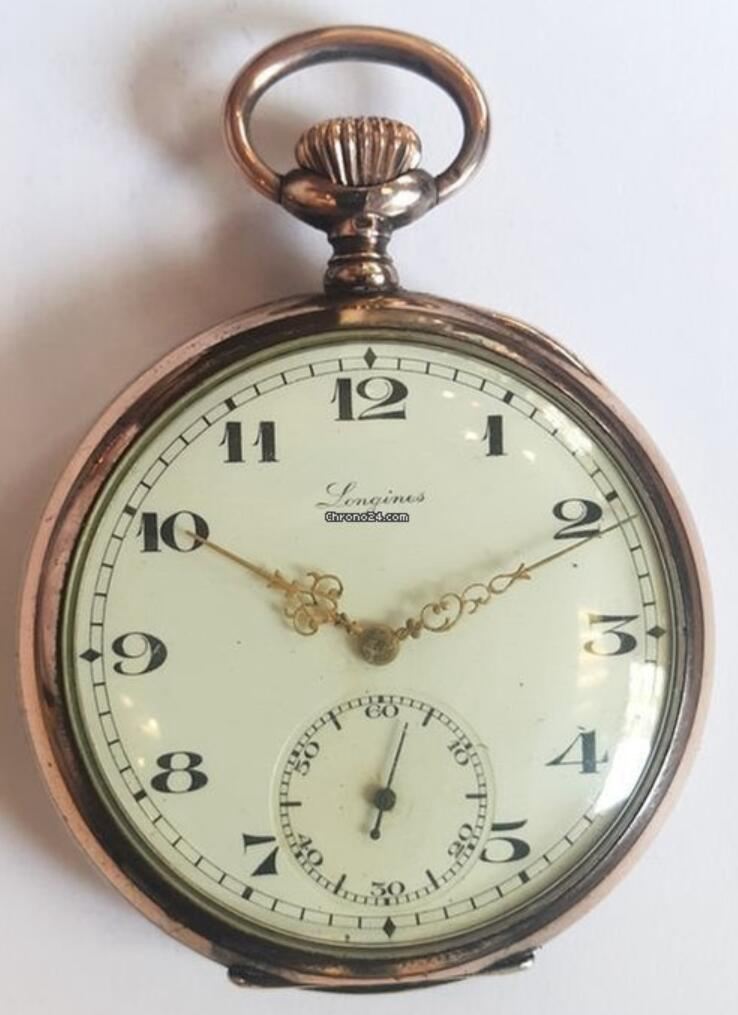
Patek Phillippe:
This is another Swiss brand with roots deeply immersed in innovation and engineering. Patek Phillipe was founded in 1839 with the sole aim of producing the most artistic and well-designed watches in the world.
Staying true to its name, the company crafted all mechanisms and machinery. As promised by its founding fathers, it incorporated beautiful designs and aesthetics in its timepieces.
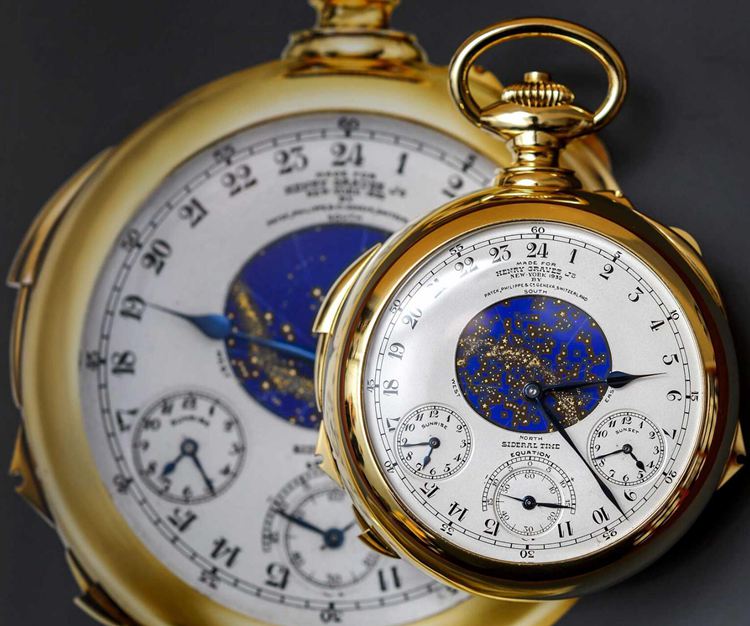
Tissot:
Founded in Switzerland in 1853, Tissot is undoubtedly a giant in the pocket watch industry. The brand boasts of being one of the biggest exporters of timepieces in the world.
With multiple ambassadors worldwide, Tissot is a name that remains familiar today.
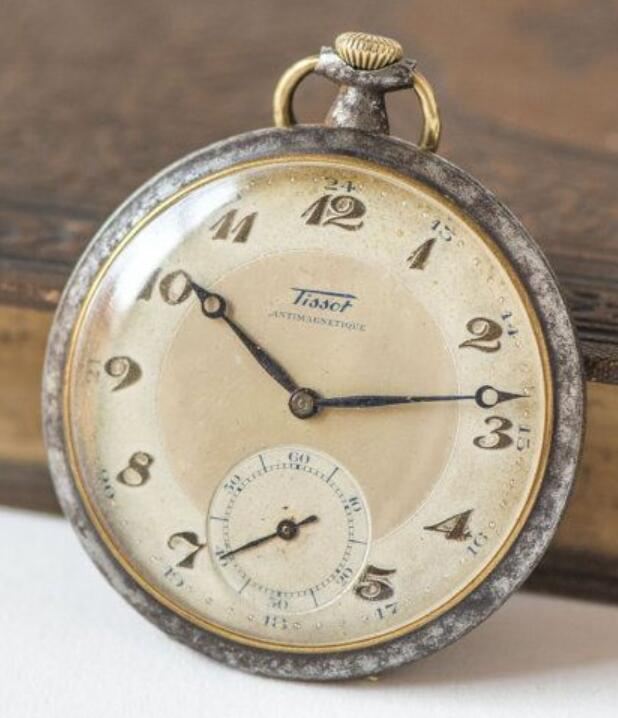
Notable Mentions:
When it comes to pocket watches, many companies have seen the light of day before slowly disappearing into the dust. The brands mentioned above are famous names when it comes to antique pocket watches. Similarly, other names include Rolex, The Adams & Perry Watch Company, the Keystone Standard Watch Company, and The Lancaster Watch Company.
You can find a complete list of American Pocket Watch Brands on PocketwatchDatabase.
Antique Pocket Watch Value Guide:
Whether you’re wondering about the value of an antique pocket watch passed down the generations or thinking of selling a seemingly luxurious piece you found at a garage sale, knowing the value of your watch is vital.
Antique pocket watches can be worth a lot or nothing at all. This is because most antique watches are damaged or broken, lowering their price to a couple of hundred dollars. However, the most expensive pocket watch ever sold was a Patek Phillippe SuperComplication at an auction for $24 million.
When it comes to assessing the value of your timepiece, there are a lot of options to consider. Several factors influence the price your watch will go for. These include:
Brand Name:
This is the most crucial factor when it comes to pocket watch valuation. Generally, watches from well-reputed and historical brands fetch much higher prices than others. Swiss brands such as Tissot, Ebel, Longines, and others are the most valuable.
Age and Case Material:
Older antique watches from the 19th century are more valuable than modern models. With the release of pocket watches, the initial models were often hand-crafted and manufactured in small batches using valuable materials such as gold and silver, making them extremely valuable.
As developments set in, watchmaking largely shifted to the use of stainless steel. This material was readily available and was used by companies for mass production for the public. Therefore, stainless steel watches are relatively common and don’t go for much.
Condition:
The condition of your timepiece is the other most crucial factor in estimating the value of its worth. Damage and general signs of wear and tear drastically reduce the price of your watch. A properly working watch in good condition will bring in a pretty penny.
Rarity:
As true for all antiques, the rarer the model is, the higher the value. Suppose your antique pocket watch was manufactured in limited quantities. In that case, there’s an excellent chance it will bring in a handsome amount.
Weight:
If your watch is heavy, there is a chance that it either has a gold casing or machinery. It is vital to research more on it to estimate its value.
Jewel Count:
Jewels in the casing or the machinery can significantly influence the value of your pocket watch. Initially, jewels had a decorative and mechanical purpose, reducing the friction of the machinery. Today, they add up to the value of your timepiece.
Movement Material:
Luxurious antique pocket watches have beautifully designed intricate patterns with movement materials such as gold and platinum, significantly increasing their value.
Wristwatch Conversion:
Some antique watches have been converted into wristwatches by their owners. Conversion of your pocket watch into its wrist counterpart lowers the value.
Type of Watch:
As already mentioned, companies created pocket watches of several types. Out of all those, railroad pocket watches are the most valuable. This is because railroad watches had strict government-set standards and regulations to which the company had to adhere, ensuring that they showed the accurate time to avoid disasters.
High-Value Indicators:
The presence of any of the following indicators might give a hint about the worth of your pocket watch:
Gold Case:
Gold Case markings of 14K, 18K, or 750, along with a stamp on the inside back cover of the casing, makes the watch more valuable than unstamped pieces. These markings were made of gold; hence, no markings meant no gold.
Attractive Case:
If your antique pocket watch exhibits jewels set in its case, painted, or enamel, it is probably worth digging into.
Note: While assessing your antique pocket watch, getting help from an expert is helpful. One such valuable source is Stephen Bogoff, an American antiquarian horologist with expertise in antique timepieces.
Final Thoughts:
Pocket watches, useful for their reliability, have lost their use in the modern world. Once considered a symbol of wealth and affluence, these antiques are now a collector’s goldmine. However, pocket watches are an integral part of fashion today due to their aesthetics and beauty.
Valuing your timepiece begins with its identification and thorough research. While most pocket watches do not sell for much, they can have great sentimental and antique value.
Now that you clearly understand pocket watches and their values, it’s time to go hunting for family heirlooms in the storeroom or the garage sale next door. Who knows? You might get your hands on the “right piece” and become a millionaire.





![Where To Sell Antique Furniture In 2022 [Ultimate Guide]](https://www.jacquelinestallone.com/wp-content/uploads/2022/09/Etsy-Your-Place-To-Buy-And-Sell-All-Things-Handmade-600x450.jpg)


